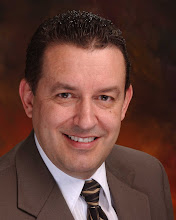Healthcare in America has undergone quite a change in the past few years. It may surprise you to learn that more than 50% of all physicians in the U.S. are now employees, either of an insurance company, hospital group, or other physicians, instead of being in independent private practice. An alphabet soup of letters have become recognizable by everyone; HMO’s, PPO’s, IPA’s, DMO’s, to name a few. When the Clinton’s failed in their plan to let government take over our healthcare system, big business and the insurance companies stepped in and took over medicine. Since physicians and hospitals depend on insurance reimbursement for a large majority of their income, they had no choice but to agree to the dictates of the insurance industry. Whether or not these changes have been beneficial or not is debatable. Every day we hear a new horror story involving someone having their health placed in jeopardy by an HMO more interested in saving a dollar than in their well being.
Now the same forces that have taken over medicine have turned their sights on dentistry. Since only half of the population has dental insurance, it has not been quite so easy to get this process going, but begun it has. Every week I receive a new offer in the mail to join a different dental plan. There are two basic types being offered as an alternative to traditional insurance. The most common type is the PPO (Preferred Provider Organization), which asks the dentist to accept anywhere from 25-50% less than their usual fee in exchange for access to a pool of patients that are encouraged to choose a dentist “off the list.” The patient can still see whomever they choose, as long as they’re willing to pay the difference between what the PPO’s fee schedule allows, and what their dentist’s normal fee is. PPO systems create an environment that puts pressure on the dentist to do as much as possible, seeing more patients during the day, and sometimes working longer hours, to make up the loss. It’s difficult to provide personalized attention and do quality work in a rushed fashion. In addition, it’s impossible to employ the quality labs we use, keep up with the latest technologies, and hire the finest employees for our team at 25-50% less than our usual fees.
The other type is called capitation, and is not insurance, but a dental “plan.” No claim forms are needed, since the dentist can not file a claim for reimbursement. Dentist’s who participate in these plans have agreed to accept roughly $7.00 per month for one person ($15.00 per month for an entire family), in exchange for a pool of patients that have chosen them from a list of participating dentists. The patient pays nothing for preventative visits, and a small co-payment for restorative services. $10.00 for a filling, on up to about $240.00 for a crown, are close estimates. Other than the $7.00 per month, this is all these dentists receive. These type of plans encourage just the opposite of a PPO plan, which is to see as few of the patients on your list as possible. Obviously, $7.00 per month doesn’t buy much in the way of quality, care, concern, cleanliness, and attention to detail. Employers choosing this plan for their employees can only be interested in cost containment, not quality. Capitation plans are sometimes offered “free” to employers by the insurance companies as a “loss leader” to entice them to purchase their more profitable medical coverage. One of the things both of these plans have in common is that virtually any dentist with a license and adequate liability insurance qualifies. The end result with both is a system that manipulates not only the healthcare provider, but the patient as well. Most patients don’t want to be involved in a system that encourages either overtreatment, or undertreatment of their needs.
In 1995, I was privileged to join many dentists from all over the country in the founding meeting of the Foundation for Private Care. We are dentists who have become concerned over the fact that patients in our country are becoming the victims of the abuses and inequities as mentioned before. I'd like to share with you a couple of points from this exciting session.
To begin with, we took a long look at the definition of a professional. A professional IS a professional for these reasons:
· We pursue the common good of individuals first, not our own personal good.
· We are committed to respecting the inherent worth, value, and dignity of each person.
· A profession is a vocation, a commitment to a way of life, not just a way to make a living.
· It is the professional who is the patient’s advocate.
· We organize, not to protect our own self‑interests, as do labor unions and trade associations, but rather to promote the public good.
In a nutshell, we believe that there is a disturbing trend today which is actually disease-care, masquerading as health-care! Most emphasis is placed on treating symptoms of disease, not dealing with causes (i.e. no true prevention). Patients are being treated passively, and not being allowed to participate in their own prevention of disease.
Label: Sweetwater Smiles





No comments:
Post a Comment